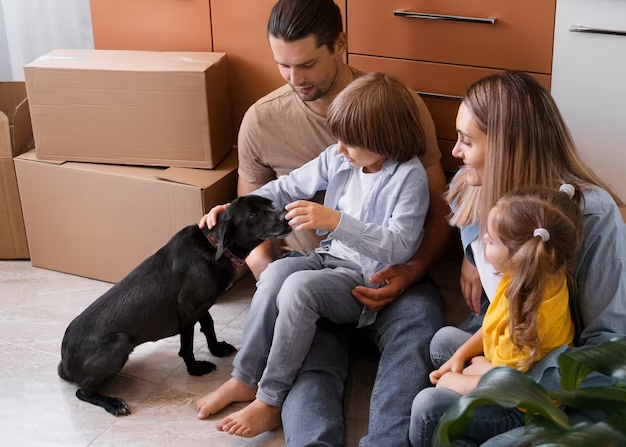A Quick Guide To Moving House With Pets
By Anna Roberts
Published 2 years ago
Transporting Pets Safely
When transporting your pets to your new home, first and foremost you have to make sure that it is safe for them to travel. Naturally this depends on how long the journey may be, if it is only a short trip down the road, a few hours, or if international travel; the needs of your pet will change.
For those longer trips, make sure they have comfy bedding inside the vehicle, are safely secured, and when needed are able to have a stretch. For each hour or two when travelling, also make sure to have rest breaks where they can get out of their crate or carrier if required , go for a toilet break and a walk.
With even longer travel such as air travel, make sure that you check with your travel operator the conditions of which pets will be travelling in, whether they go into a special hold or whether they are allowed into the main aircraft. If they are anxious travellers, it may be worth placing items that smell of comfort inside their carrier or crate, alongside lots of comfy bedding. A veterinarian may also suggest anxiety calming medication for the pet.
Maintaining Normal Routine
Moving house can be disruptive to a pets routine in the lead-up to and in the process of moving house - it is important to keep as close to their routine as possible. This includes regular meal times, walks, and playtime too - especially when in a new home so as to have them grow more accustomed to their environment and make it feel like home. Making sure that they have the same amount of interaction with family members they are used to.

Updating ID Tag and Medical Records
Updating your pets ID tag and medical records, including their microchip, is one of the most important parts of a move! If they get lost, or try to return to an old property if they get lost, this is key for them being reunited with you. This should be easy to update on a computer, and should be prioritised as soon as arriving at your new home with your pet.
Preparing Your New Home
Everyone has a safe space. Humans do, and the same goes for pets too. This would be a spot with all their familiar things, their space. Their toys, their bedding, their crate - these things all carry your scent as well as their own and so they will allow your pet and privacy as well as an area to calm down if getting overwhelmed by the new environment.
It may be useful to get baby gates or something along those lines in order to corner off areas of the new environment so that your pet can explore at their own pace and not become too overwhelmed by all the change.
Adjusting To A New Space
By slowly introducing your pets into the environment by slowly removing gates or doors that may have separated rooms it ensures that the overwhelm of leaving their old environment and being thrown into a new one has less of an impact on your pets mental health.
On this, some pets may refuse to settle and get excited and so may require a calming tone and presence at all times, whereas others may retreat and not want to come out of their safe space. Make sure you give them plenty of positive reinforcement and not force them out of their safe space, they will explore in their own time. Make sure to be understanding and supportive no matter their reaction to their new environment, they have their own feelings but pick up on your emotions too.




